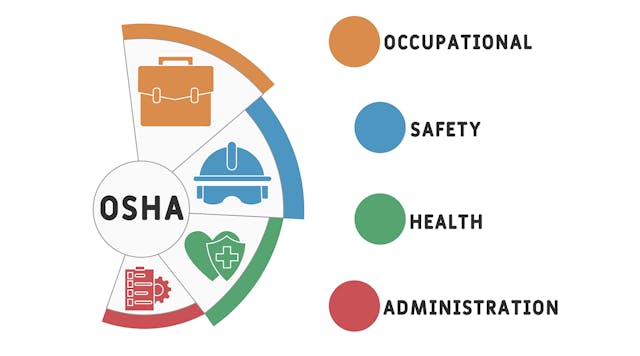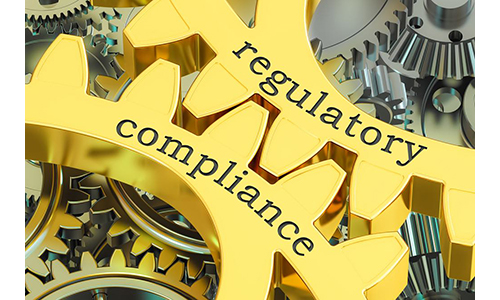The vast majority (87%) of senior business leaders say digitization is a priority at their organization. However, within the environment, health and safety (EHS) industry, many professionals still spend most of their time digging through spreadsheets, binders and emails crowded with outdated safety data sheets (SDSs).
Facilities that store and manage extremely hazardous chemicals must comply with the U.S. Environmental Protection Agency’s Emergency Planning and Community Right-to-Know Act (EPCRA) Tier II reporting requirements. These companies must submit SDSs and inventory information to the State Emergency Response Commission (SERC), Local Emergency Planning Committee (LEPC) and local fire departments.
Over 500,000 products have SDSs, which provide critical information about chemical hazards and handling. When those SDSs contain outdated information, it puts first responders in harm’s way because it hampers their ability to respond safely and effectively to an emergency at a facility with one (or more) hazardous chemicals stored on-site. This situation becomes even more urgent when facilities pose risks to nearby communities.
The good news? EHS teams can bring clarity to managing and updating SDSs. By centralizing and digitizing SDSs across the enterprise, EHS teams will uncover these six benefits for their organizations.
1. Gain Quicker Access to Information
Many SDS libraries consist of disorganized paper trails in binders or PDFs spread across different computers and employee emails. When information lives in multiple locations, EHS managers can’t access information quickly. But, in an emergency situation, response time can be the difference between life and death. The impact of this issue is amplified for large organizations with facilities in multiple locations and states.
By digitizing SDSs, EHS teams create a centralized data source, eliminate data silos and provide greater accessibility for all employees. Stakeholders can search one digital location for what they need and don’t need to waste time looking for misplaced data. When introducing this digitization, employees must be trained on the Globally Harmonized System of Classification and Labelling (GHS) SDSs, where they can find them in their workplace and the hazards of the materials they work with.
Digitization also improves workforce productivity and relieves EHS professionals’ workloads, allowing them to focus on other strategic initiatives, such as creating new and innovative safety programs. Additionally, EHS teams gain real-time jobsite visibility. Employees aren’t left searching for paper sheets and hoping they’ve found the most updated version. Should an accident occur, employees and first responders can quickly find electronic SDSs and other important safety documentation and respond appropriately.
2. Improve Communication Between Systems
Traditionally, organizations don’t connect their SDSs between systems. EHS managers often need to download SDSs from one system and then upload them to another. This movement generates the unintended risk of using inaccurate copies of SDSs, which is not only a compliance risk but could also be a risk to employees—or the surrounding community. If data among different systems are not in alignment, employees may not be aware of a hazard while handling a chemical, or emergency responders may not know how to respond properly. Environmental data management software eliminates this issue by supporting intercommunication between systems.
3. Compile and Update SDSs in Bulk
When all the information lives on paper or in PDF form, EHS teams struggle to effectively manage all SDSs. Finding specific SDS information requires opening each individual document. What’s more, when updates are needed, each existing SDS document for the chemical needs to be updated separately. Environmental data management software simplifies the process for Tier II compliance by centralizing and standardizing a company’s chemical product library.
Occupational Safety and Health Administration (OSHA) regulations require organizations to revise SDSs within three months after chemical manufacturers or employers become aware of new information regarding chemical hazards. Then, organizations must submit revised SDSs to the SERC, LEPC and local fire department. In addition, facilities must review OSHA regulations and guidance to decide whether the revised SDSs should be processed and submitted under EPCRA.
As new chemicals arrive and others are used or removed entirely, employees can make one set changes to SDSs that synchronize across all systems. Digitizing and consolidating the product library gives EHS teams visibility over on-site chemicals and their updates. A digital version can also help EHS professionals keep a more detailed account of changes to chemical thresholds in real-time—and on an ongoing basis.
4. Minimize Time-consuming Manual Tasks
EHS managers must continuously track product inventory to ensure compliance with changing thresholds and requirements for Tier II chemical reporting. EHS managers must individually open each SDS to obtain the information needed, a process that takes a great deal of time and has a higher risk of incorrect manually entered data. Environmental data management systems integrate information from disparate systems into a single source, thereby removing the human factor. As a result, data becomes more trusted, or intelligent, and easier to review when it comes time for Tier II reporting.
5. Maintain OSHA Compliance
Businesses that don’t maintain OSHA compliance receive fines, penalties and possible reputational damage. Environmental data management software helps EHS teams ensure jobsites stay prepared and ready for OSHA inspections, especially those surprise inspections.
OSHA requires organizations to present SDSs in a consistent, user-friendly 16-section format. Each section has a unique significance and includes a range of information, such as:
- The product identifier used on the label and other common names by which the chemical is known;
- The hazards of the chemical and the appropriate warning information;
- First aid instructions by relevant routes of exposure (e.g., inhalation, ingestion, and skin and eye contact);
- Fire-fighting recommendations, including suitable extinguishing equipment and special protective equipment for firefighters;
- The appropriate response to spills, leaks or releases, including containment and cleanup practices to prevent or minimize exposure to people, properties and the environment;
- Guidance on safe handling practices and conditions for safe storage of chemicals;
- Exposure limits, engineering controls and personal protective measures; and
- A description of the immediate, delayed or chronic effects from short- and long-term exposure.
OSHA considers the failure to provide SDSs upon request a severe violation. Each incident can lead to maximum fines exceeding $12,000. For example, OSHA cited two Florida distributors for $12,600 each for failing to ensure that SDSs reflected the formaldehyde content in several products that caused formaldehyde exposure.
6. Report Accurate Tier II SDSs
EHS teams maintaining a paper-based SDS library most likely have outdated or duplicate documents lying about somewhere. Complicating matters further is that chemical manufacturers periodically adjust or add new chemicals to the composition of their products. Without the most recent SDSs, companies may underreport or overreport existing chemicals—or not report new additions.
Manual systems offer no easy, error-free options for updating and maintaining Tier II chemical inventories, especially when those inventories and SDSs are spread across an entire organization with multiple facilities. When SDSs are digitized, EHS teams can more easily manage documents, leading to a more compliant and submission ready SDS library.
Responsible Stewardship
The digitization of SDSs makes Tier II reporting faster, simpler and more accurate by centralizing and standardizing an organization’s chemical product library to ensure EPCRA compliance. EHS teams can say goodbye to the never-ending struggle of SDS management and give all stakeholders exactly what they need, when they need it.
But perhaps the greatest benefit of digitizing SDSs is that doing so provides emergency planners and first responders with timely and correct data that allows them to save lives, manage panic and communicate effectively during an emergency. Digitizing SDSs is one more way employers can help employees go home safely at the end of their shift—and be a responsible environmental steward in the communities they operate.
Luke Jacobs is CEO and one of the co-founders of Encamp, a provider of EHS compliance software.















































































